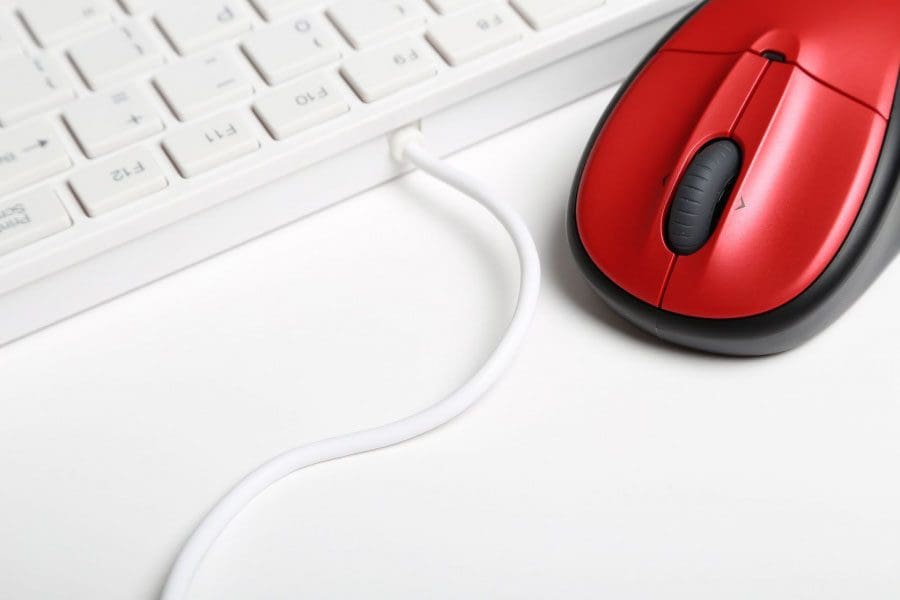
Working With an Ergonomic Keyboard and Mouse El Paso, TX.
Keyboards and mice come in all sorts of colors and styles, which is great but for those that work on a computer for a job, using the right type is essential to prevent injury keeping the hands, wrists, and arms healthy and moving.
Overuse can cause painful musculoskeletal disorders like:
- Tendonitis
- Tendosynovitis
- Carpal tunnel syndrome
There are a variety of ergonomic designs for these devices. Keyboard designs include four separate key areas:
- The alphanumeric area with letters, numbers, and control keys
- An area with cursor keys
- Numeric keypad
- Function keys or the ‘F’ keys

Keyboard Key Combinations or The Mouse
Basic typing and many other actions can be performed on the keyboard using the:
- Function keys
- Cursor keys
- Control keys
- Keyboard macros
Pretty much all of these actions can be done with the mouse. Many users operate the computer with the mouse instead of using the key combinations.
To obtain correct posture when working align the center of your body with the center of the keyboard area used the most or during a task.
Keyboard Layout
The layout follows the original ASDF design from the first typewriter.
From the beginning of this design, there was a realization that angling and splitting the keys would reduce the bending of the hands. The first split keyboard typewriter was manufactured in 1886.
The idea of splitting and angling the keys was implemented into ergonomic keyboard designs with the alphanumeric keys being separated at an angle into two sloped sections. For a� non-touch typist, this can be difficult to use, as some keyboards only angle the keys without splitting into halves.
The split design reduces the sideways bending of the hand but also important is the reduction of vertical bending.
However, this can be overcome by taking some simple steps like:
- Flattening the keyboard feet on the desk can keep the hands flat
- Putting the keyboard on a vertical tilted tray can also help improve the hands’ posture
- Keyboards are available in left and right-handed styles

Choosing a Mouse
The shape along with the location of the mouse in relation to the keyboard is important for maintaining a healthy hand posture. Here are some considerations when choosing a mouse. The mouse buttons should:
- Have easy clickability
- Is easy to move around/feels natural
- The screen cursor should move accurately with your movements
There are mice with programmable buttons allowing you to control additional functions. Important things to check:
- Make sure the size and shape of the mouse feels natural in your hand
- Hold the mouse in a neutral position meaning your hand should not be bent up, down or sideways
- Position and operate the mouse with your upper arm relaxed and close to your body, and don’t reach too far forward or too far out to the side
There are keyboards with a separate numeric pad that allows the mouse to be located closer to the keyboard. Some keyboards include a cursor positioning device like a trackball, touchpoint or touchpad. These types eliminate having to reach for a mouse. However, it is a good practice to mix it up using the keyboard for certain operations and the mouse for others. This allows different muscles and ligaments to work while the others take a break.
The Ideal Setup
All keyboards and mice are designed differently. The key is to find well-made products that are built with ergonomic injury prevention as the focus. You can use trackballs, touchpads, and pen mice instead of a regular mouse.
Find what works for you, is ergonomic, comfortable and easy to use and will keep your hands in a neutral posture. If you do a lot of typing and mouse movement, your hands are going to get tired even with top designed keyboards and mice. Take frequent short rest and stretch breaks to let your muscles recover. The stretching exercises should include the:
- Wrist
- Forearm muscles
- Shoulders
- Neck
- Upper back muscles
Working like this will protect you against over-use injuries.
Carpal Tunnel Chiropractic Treatment
NCBI Resources
Chiropractic care is one of the most common forms of treatment for carpal tunnel syndrome. Foremost, a doctor of chiropractic will evaluate the extent of the condition as well as diagnose the individual to determine any underlying cause behind the condition. Through a series of chiropractic adjustments and manual manipulations, the hand, wrist, and arm are adjusted to reduce the pressure around the median nerve, and ultimately reducing the symptoms.






